Repairing lawns
If your lawn is looking worn and patchy, find out how to restore it by re-seeding or re-turfing affected areas in spring or autumn. We also explain how to even out small bumps and dips.
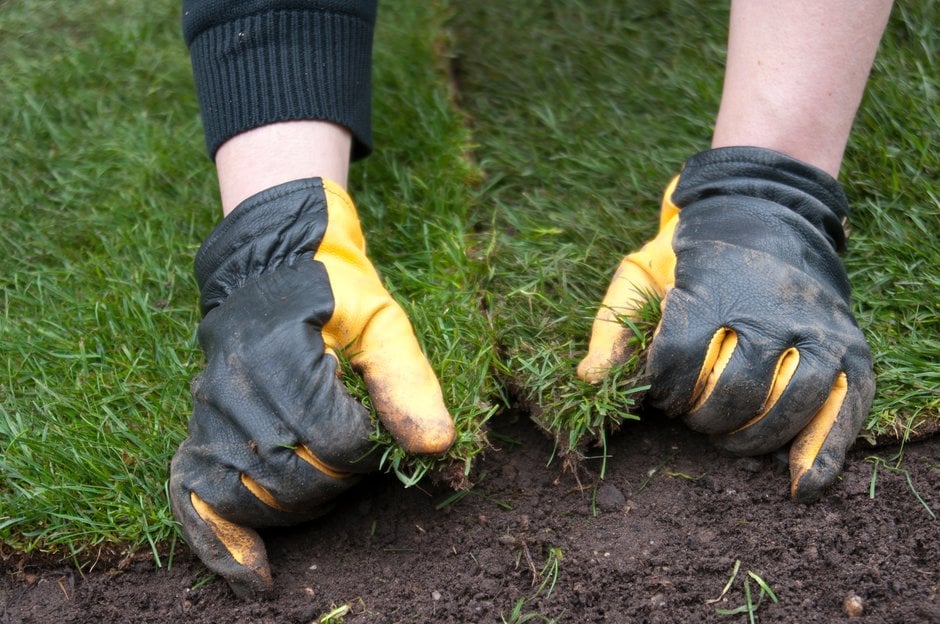
Quick facts
- Repair lawns in spring or autumn
- Re-seed bare patches or use turf from another part of the lawn
- If the whole lawn is patchy, it may be best to totally re-seed or re-turf the lawn
Jump to
Why and when to repair
Lawns often start to look tatty or patchy after a summer of regular use or spells of hot, dry weather. Frosty or soggy winters can also take their toll, especially if the lawn is walked on a lot. Perhaps your lawn has some dips or bumps that make mowing tricky, or sparse areas around the edges where border plants overhang it. Repairing issues such as these will help to stop unwanted weeds colonising bare areas and smarten up the lawn’s overall appearance.
Spring and autumn are the ideal times to repair a lawn, when the weather is damp and cool. The lawn is most likely to recover well in these conditions.
If your lawn is in a really poor state though, you may need to consider re-laying or re-seeding it entirely, rather than just patching it up.
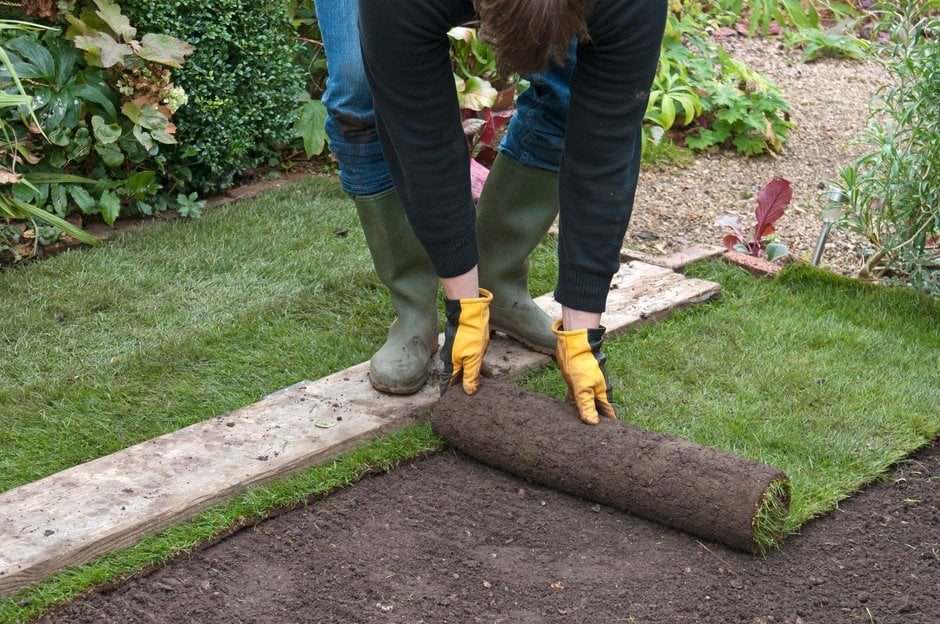
How to lay turf
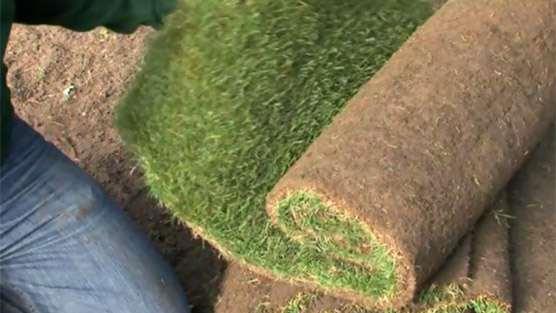
Laying a lawn from seed and turf
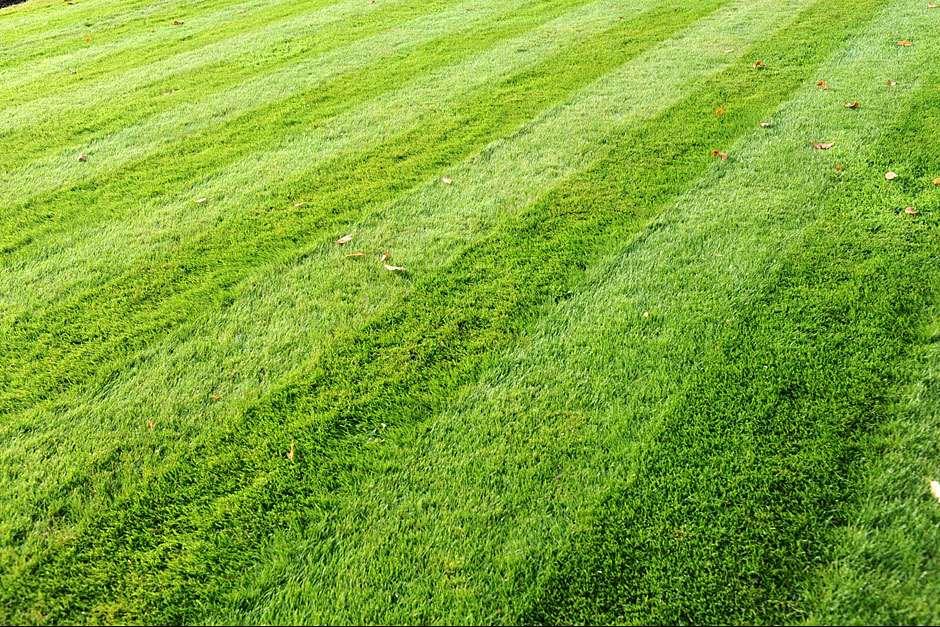
Starting a lawn from seed
How to repair bare patches
Damaged or bare areas of lawn can be repaired by either sowing lawn seed or patching it with a piece of turf dug up from another part of the lawn, or new turf if available. The latter gives instant results, but sowing seed may be easier and cheaper if you have no spare turf to use as a patch.
If the bare area was caused by shade, choose a lawn seed mix specifically for shady sites, or if the lawn gets heavy wear, choose a robust utility lawn seed mix. For more on choosing suitable lawn seed, see our guide to sowing a new lawn.
Repairing with lawn seed
Lawn seed is quick and easy to sow, relatively cheap and you can choose a seed mix to suit your growing conditions. But it will take several months to get established.
-
Cut out the damaged area of turf in a square, using a half-moon edging iron or flat-bladed spade, then slice underneath it to lift it, to a depth of about 5cm (2in)
-
Lightly fork or dig over the soil in the square and work in some top soil or garden compost, then firm gently with your feet to make a level surface
-
Scatter the grass seed evenly over the prepared soil, at the rate advised on the packet – usually about 15–25g per sq m (½–¾oz per sq yard)
-
Cover the seeds with a light sprinkling of top soil or home-made compost to hide them from birds. You could also cover with fleece, pinned down at the edges, to keep birds away
-
Water gently with a watering can fitted with a fine rose, to avoid dislodging the seeds
You can also get good results by pre-germinating the seeds before sowing. Add them to some moist peat-free multi-purpose compost in a bucket and cover with clingfilm. Place somewhere warm – at no higher than 15°C (60°F). After three days, check for signs of germination, and continue checking daily until you see small white roots appearing. Then sow the mixture as above.
Repairing with turf
For an instant fix, you can patch the damaged area with some healthy turf from another area of the lawn, where it won’t be missed, or use new turf if available.
-
Cut out the damaged area of turf in a square, using a half-moon edging iron or flat-bladed spade, then slice underneath it to lift it, to a depth of about 5cm (2in)
-
Lightly fork over the soil in the square and work in some top soil or garden compost, then firm gently with your feet to make a level surface
-
Cut out an identical-sized square of healthy turf from an inconspicuous part of the lawn or from a newly bought roll of turf
-
Place the healthy piece of turf into the prepared square, and firm down, ensuring it sits at the same level as the surrounding lawn
-
Compress the turf edges with the back of a rake and brush a sandy lawn top-dressing (see below) into the crevices around the edges
- Water thoroughly
How to repair lawn edges
Lawn edges often get damaged by being walked on or by shading from overhanging plants. But a neat, well-defined edge makes the whole lawn look much smarter, so it’s worth repairing any worn areas and re-cutting the edges regularly.
To repair a worn edge:
-
Carefully cut out the damaged area with square cuts on three sides, then slice underneath with a spade, aiming to keep it as one intact piece of turf. The piece should contain both the worn area and some healthy turf on the inner side
-
Prepare the soil in the base of the square by lightly forking over and working in some top soil or garden compost, then firm gently with your feet to make a level surface
-
Turn the damaged square through 180° and replace it so that the inner, cut edge now aligns with the lawn edge and the damaged edge is inwards. This restores a strong, healthy outer edge to the lawn
-
If the bare or sparse area, which had previously been the lawn edge, is a thin strip (20cm/8in or less), rake to lightly disturb the soil and sow with grass seed. A larger damaged area should be cut away, then follow the steps above for repairing a bare patch
How to even out minor bumps and hollows
-
Cut through the uneven area with an H-shaped incision, using a flat-bladed spade, and peel back the turf
-
Fork over the base and either remove the excess soil or add new top soil to raise the level
-
Firm down the soil so it is level, then replace the two flaps of turf
-
Check the lawn is level and adjust again if necessary
-
Compress the turf edges with the back of a rake and brush a sandy lawn top-dressing (see above) into the crevices where the turf was cut
- Water thoroughly
How to keep your lawn in good condition
Once repaired, it’s worth finding and remedying the cause of the damage, so your lawn stays in good shape.
See our guide to bare patches in lawns if you're not sure why they appeared.
If you think poor growing conditions are the problem, find out how to address them:
Lawn care for drought
Lawns in shade
Waterlogged lawns
It's also important to give your lawn regular maintenance in spring and autumn, to keep it looking its best:
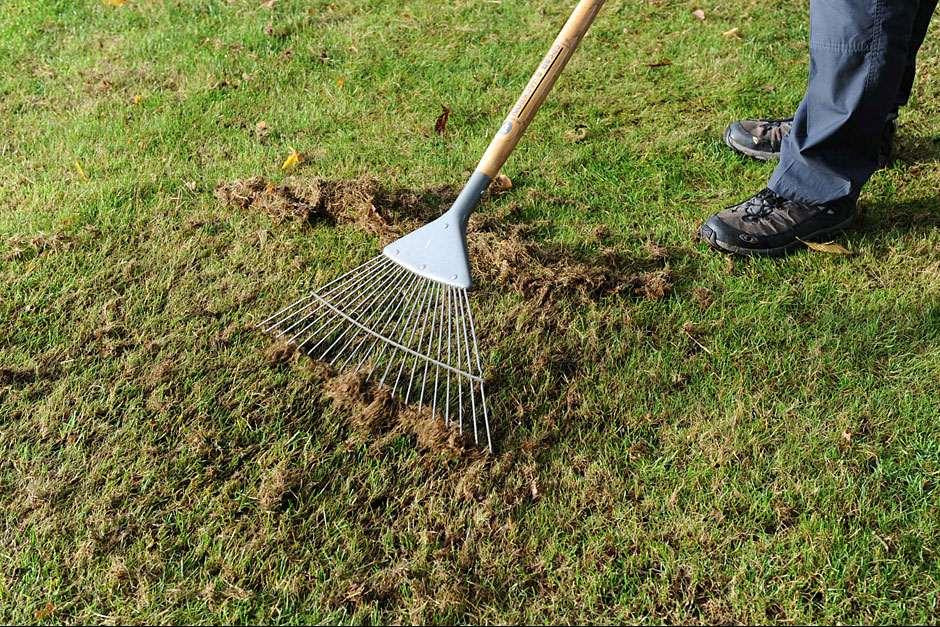
Lawn care in autumn
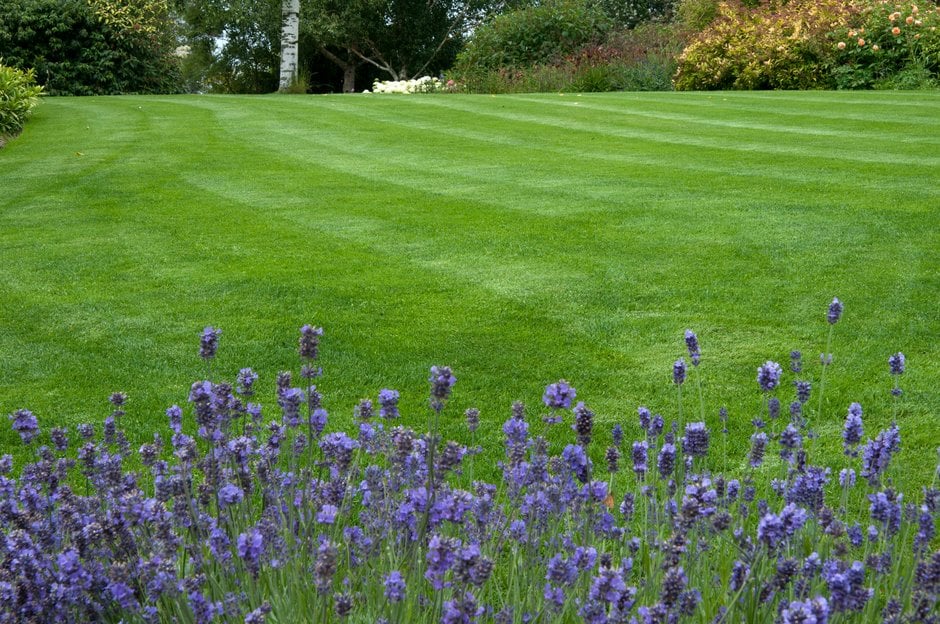
Lawn care in spring and summer
Problem solving
Newly sown grass and newly laid pieces of turf are susceptible to drying out until well rooted, so water regularly if there isn’t enough rain over the following months.
Get involved
The Royal Horticultural Society is the UK’s leading gardening charity. We aim to enrich everyone’s life through plants, and make the UK a greener and more beautiful place.